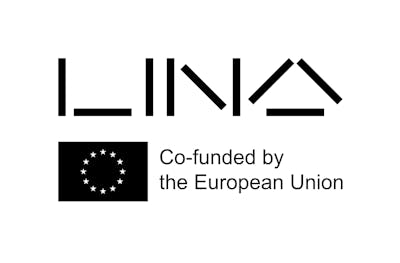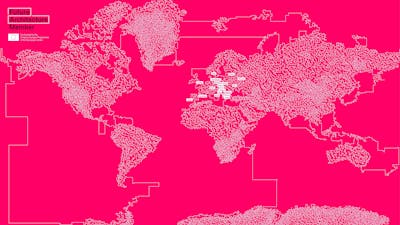Nye europeiske samarbeid
Internasjonale stemmer blir med i samtalen
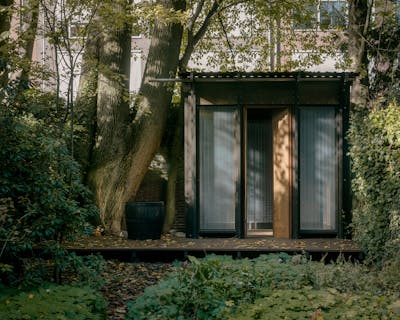
Foto: Stijn Bollaert / Studio ACTE
Møt de tre unge europeiske kontorene som er invitert til å samarbeide med Oslo arkitekturtriennale i 2024
Som medlem av den europeiske arkitketurplattformen LINA, bidrar Oslo arkitekturtriennale sammen med nesten 30 andre toneangivende kulturorganisasjoner og institusjoner til en internasjonal platform for kunnskapsutveksling med unge og lovende praksiser innenfor arkitekturfeltet. LINA organiserer hvert år et offentlig program som har som mål å bidra til endring, og løfte frem praksiser som er mer bærekraftige, sirkulære og klimabevisste.
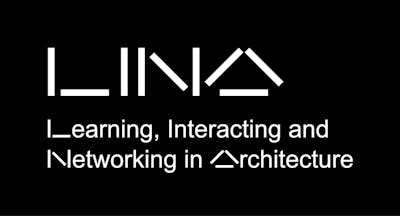
Den europeiske arkitekturplattformen LINA er nettverk bestående av 27 arkitketurmuseer, universiteter, forskningsnettverk, stiftelser, triennaler, biennaler og andre europeiske arkitekturorganisasjoner.
I denne nye samarbeidssyklusen i 2024, har triennalen invitert tre unge kreative team fra rundt i Europa til å utvikle og produsere kortfilmer, og til å reise til Oslo for å delta i samtalen om sammenhengen mellom natur og nabola, som en del av oppvarmingen til neste utgave av Oslo arkitekturtriennale i 2025. Med utgangspunkt i spesifikke caser fra hver sin lokale kontekst, vil de ulike teamene undersøke og reflektere over hvilke strategier, situasjoner og handlinger som bidrar til å skape positiv forandring og transformasjon i sine lokale omgivelser og nabolag.
De utvalgte Lina-medlemmene i 2024 er Baukreisel, Foil&Soil Mishmash og Studio ACTE.

Baukreisel er et tverrfaglig kollektiv bestående av arkitekter, ingeniører, samfunnsvitere, økonomer og jurister. Organisasjonen arbeider for å maksimere ombruk av eksisterende bygningsmaterialer gjennom forskning på skalérbare ombruksprosesser, samt gjennom å designe med ombruksmaterialer i den arkitektoniske praksisen, for slik å konfrontere og utfordre de materielle og immaterielle skadevirkningene av dagens bygningspraksiser. I tillegg trekker Baukreisel oppmerksomhet til denne kunnskapen gjennom undervisning og arbeide for aktivisme, og kjemper dermed for en grunnleggende reorientering av byggebransjen gjennom å reevaluere og stille spørsmålstegn ved eksisterende lineære prosesser, samtidig som de forsøker å skape en ny forståelse av skjønnhet.
Baukreisels mål er å bevare både den materielle energien – altså ressurser og materialer som gir CO2-utslipp – og den kreative energien – bygningskultur og designpraksiser – som er innkapslet i eksisterende bygninger.
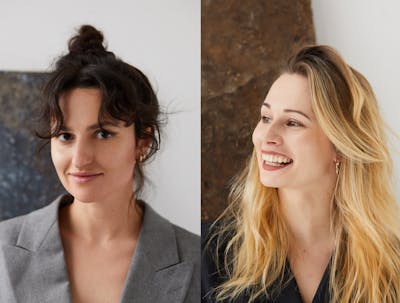
Foil&Soil Mishmash ble grunnlagt av Magdalena Gorecka og Magdalena Skowyra, og er en «post-plast»-lab som utfordrer forståelsen av materialer og tenker nytt om måten de utvikles og brukes i ulike skalaer. Laben fungerer som en bro som kobler materialvitenskap, nye teknologier og byplanlegging.
Magdalena Gorecka er arkitekt og urbanist, og arbeider mellom Polen, Østerrike, Ghana og Liberia, med fokus på forskning, design og undervisning. Hun undersøker romlige strategier gjennom bruk av ukonvensjonelle materialier i marginaliserte europeiske og subsahariske forhold. For tiden underviser Gorecka ved the University of Applied Arts i Wien, og utfører forskning i samarbeid med FN i Liberia.
Magdalena Skowyra er basert i København, og er kjemiker og medisiner. Hun har PhD fra Fakultet for helseteknologi ved Danmarks Tekniske Universitet, og er PostDoc ved Danish Polymer Center Group. Skowyera har sin ekspertise innen materialvitenskap og polymerkjemi, med et sterkt fokus på design av nye materialer.

Studio ACTE er et fransk-nederlandsk arkitektstudio, grunnlagt i Rotterdam i 2020 av Estelle Barriol. Studio ACTE fokuserer på utforskningen av motstandsdyktig arkitektur, inspirert av tradisjonelle systemer, med vekt på lavteknologisk og «geo-sourcet» design og basert på ombruksmaterialer. Arbeidet deres involverer prosjekter i liten og stor skala, materialforskning, kollektive prosesser og selvbygging, og ser etter mulige løsninger for å adressere uttømmingen av ressurser og økosystemenes sårbarhet. Gjennom and design-og-bygge-metode som er drevet av eksperimentering, tenker Studio ACTE nytt om hvordan man kan bygge, med gjenbruk, folk og kultur som viktige stikkord.
Samtidig som Studio ACTE fokuserer på detaljer og konstruksjoner som involverer lokal kunnskap, tror studioet på regenerative praksiserer som inviterer inn håndverk og estetikk for å oppnå faktisk bærekraft.
